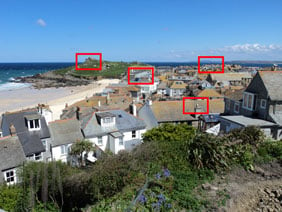Fujifilm FinePix JZ300
-
-
Written by Gordon Laing
Quality
Fujifilm Finepix JZ300 vs Panasonic Lumix DMC-FS30 / FH20 Real-life resolution
Fujifilm FinePix JZ300 |
Panasonic DMC-FS30 / FH20 | |
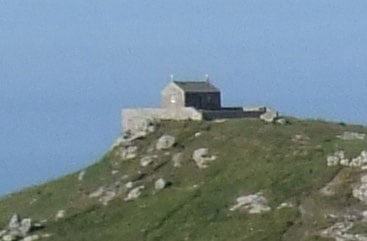 |  | |
f6.4, 100 ISO |
f3.3, 80 ISO | |
 |  | |
f6.4, 100 ISO |
f3.3, 80 ISO | |
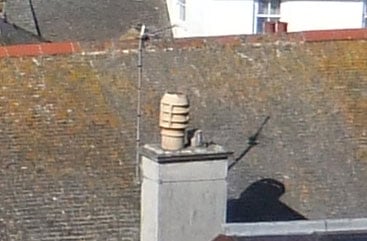 | 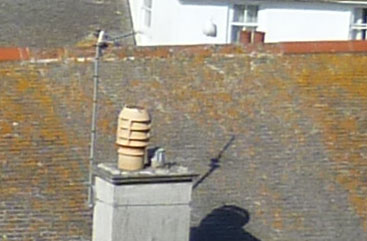 | |
f6.4, 100 ISO |
f3.3, 80 ISO | |
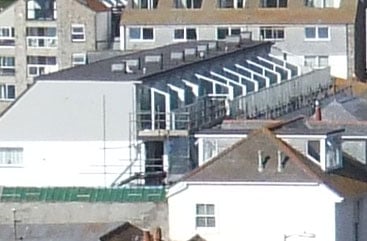 | 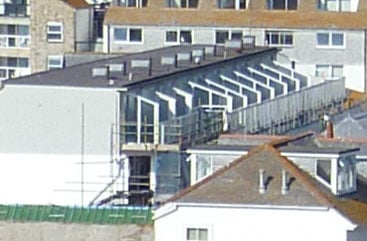 | |
f6.4, 100 ISO |
f3.3, 80 ISO |
The above image was taken with the Fujifilm FinePix JZ300 in Program mode. The lens was set to 5 mm (28mm equivalent) and the metering selected an exposure of 1/420th of a second at f6.4 at an ISO setting of 100. The original 4000 x 3000 pixel image had a file size of 4.42MB. Generally speaking the FinePix JZ300 produces excellent results. In terms of exposure and colour rendition it deals very well with outdoor landscape scenes like the one used for our test shot. The subject is well exposed with a healthy-looking histogram that stretches to both ends of the horizontal axis with no clipping of the shadows or highlights. Colours are rich and vibrant, but natural-looking and not over-saturated. Looking at the 100 percent crops, there’s nothing that’s a major cause for concern. The overall level of detail in these images could be a little sharper, but it’s good enough and certainly preferable to the kind of artefacts that inevitably result when manufacturers attempt to process images to produce sharper, more contrasty results. There’s no evidence of haloing along the horizon in the first crop – a frequent tell-tale sign of over-processed images, the lighthouse is a well-defined single column of white and you can make out some detail in the cliffs behind it. Compare the Fujifilm FinePix JZ300 crops with those from the Panasonic Lumix DMC-FS30 / FH20 and you’d be hard pressed to come out in favour of one or the other. The Lumix FS30 crops show slighly more detail because of its higher resolution 14 Megapxel sensor, so the crops are actually showing a smaller area at a larger size even though both cameras are set to the same (28mm equivalent) focal length. Despite this, we don’t think the Lumix FS30 / FH20 is better at resolving detail than the FinePix JZ300, if anything the detail in the foreground houses in the lighthouse crop is ever so slightly softer. You’d only notice this comparing full sized prints though and, even then it’s marginal. You can make your own judgement from the crops, but from what we can see it’s too close to call. Now let’s check out how they compare at higher sensitivities in our High ISO Noise results. |
Fujifilm FinePix JZ300 vs Panasonic DMC-FS30 / FH20 High ISO Noise
|
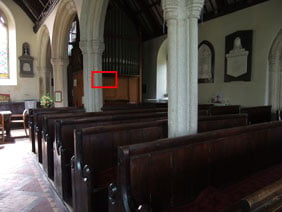 | To compare noise levels under real-life conditions we shot this scene with the Fujifilm FinePix JZ300 and the Panasonic Lumix DMC-FS30 / FH20 The lenses on both cameras were set to approximate the same field of view and ISO was manually set. |
The above shot was taken with the the Fujifilm FinePix JZ300 in Program mode with the lens at a wide angle setting of 5mm (28mm). The exposure was 1/4 of a second at f3. The crops are taken from the area marked with the red square and presented below at 100%.
The keen-eyed amongst you will notice that the first crop in the series, taken at 100 ISO is quite badly underexposed, and the 200 ISO shot is also a little underexposed. The reason for this is the JZ300’s slowest available shutter speed range in Program mode is 1/4 of a second. Slower speeds are available in some of the scene modes like Night, but that isn’t going to help here. If you like to shoot interiors at slow shutter speeds with a tripod, this is something you’ll need to consider and may rule the JZ300 out. It makes it difficult to make an assessment of the noise levels at these lower ISO settings, but from what we can see there’s little evidence of noise in these crops, though the detail in the stone column on the right is on the soft side.
At the higher ISO levels the FinePix JZ300 does a good job of maintaining balance between the inevitable noise increase and the effects of the processing required to keep it in hand. The 400 ISO crop looks grainy, but not unpleasantly so, and the noise has an organic, slightly film grain-like quality. At 800 ISO we’re definitely looking at digital noise, nonetheless this is a quality compromise that in many situations would be worth making to get a low light shot.
At 1600 ISO and the 3 Megapixel 3200 ISO settings it all gets very ugly, but there isn’t a compact camera that doesn’t suffer the same fate at these high ISO settings.
Compared with the Panasonic Lumix DMC-FS30 / FH20 there are some distinct differences. For one thing, the FS30 / FH20’s shutter speed range extends to 8 seconds and for this scene it selected a (correct) exposure of 0.8 of a second at f3.3. At the lower ISO range from 80 to 200 ISO the Lumix FS30 / FH20 crops are correctly exposed and show better detail than those form the JZ300. At 400 ISO though, there’s a marked difference and the Lumix FS30 / FH20 crop becomes quite badly smeared. From 800 ISO upwards there probably isn’t much to choose between the two. The FS30 / FH20’s ability to shoot long exposures combined with superior performance at the lower end of the ISO scale makes it a better choice for interior and low-light tripod-based shooting.
Now head over to our Fujifilm FinePix JZ300 gallery to see some more real-life shots in a variety of conditions.
Fujifilm FinePix JZ300 |
Panasonic DMC-FS30 / FH20 | |
 | 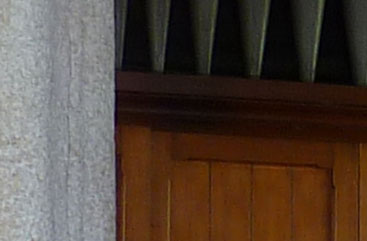 | |
80 ISO not available |
80 ISO | |
 | 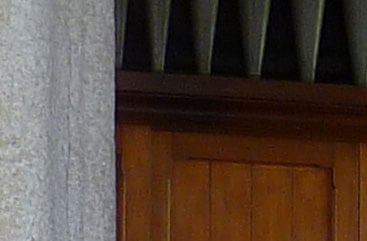 | |
100 ISO |
100 ISO | |
 | 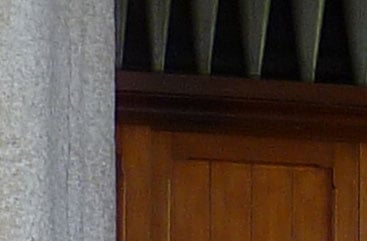 | |
200 ISO |
200 ISO | |
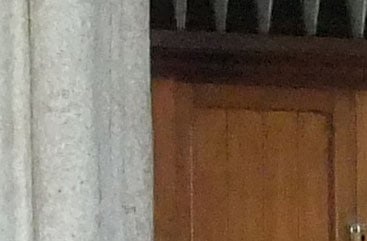 | 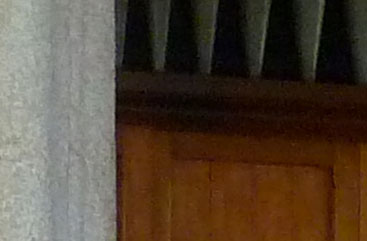 | |
400 ISO |
400 ISO | |
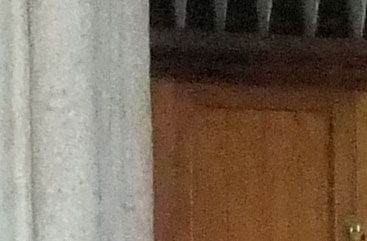 | 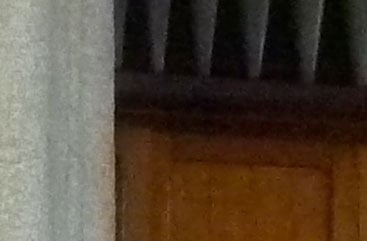 | |
800 ISO |
800 ISO | |
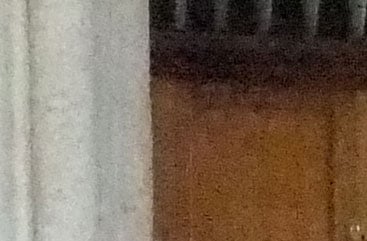 | 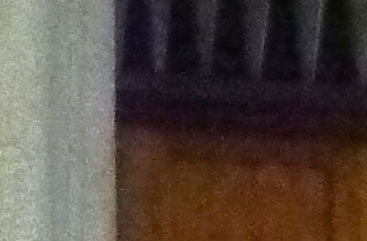 | |
1600 ISO |
1600 ISO | |
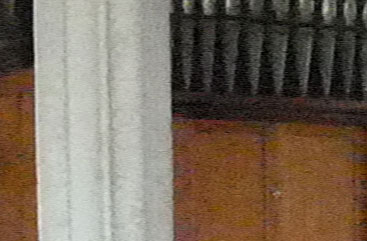 |  | |
3200 ISO (3 Megapixels) |
3200 ISO Not available |

